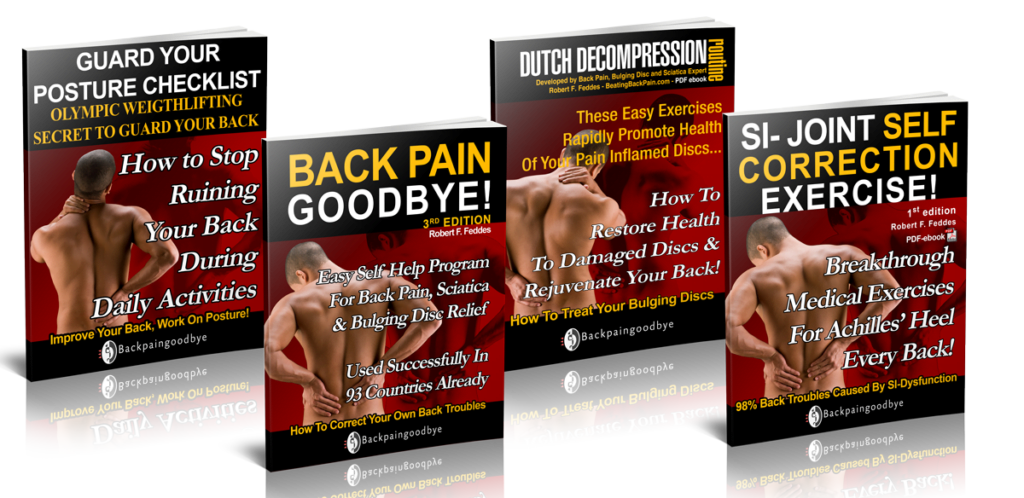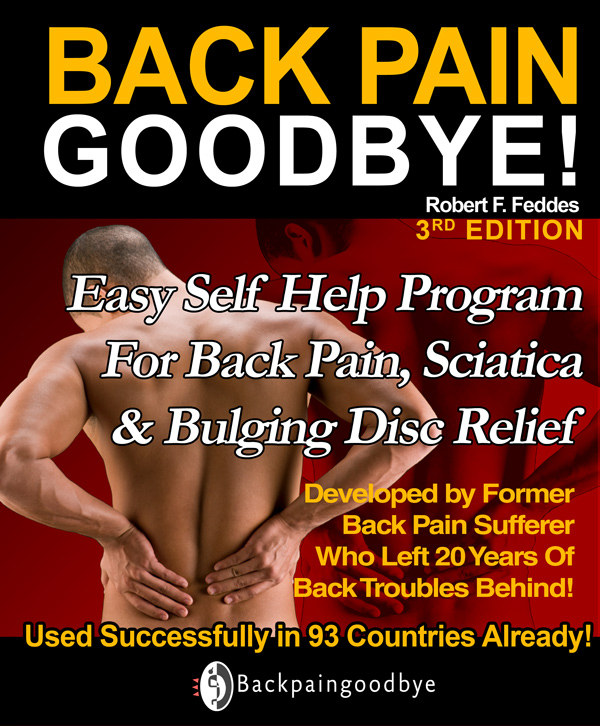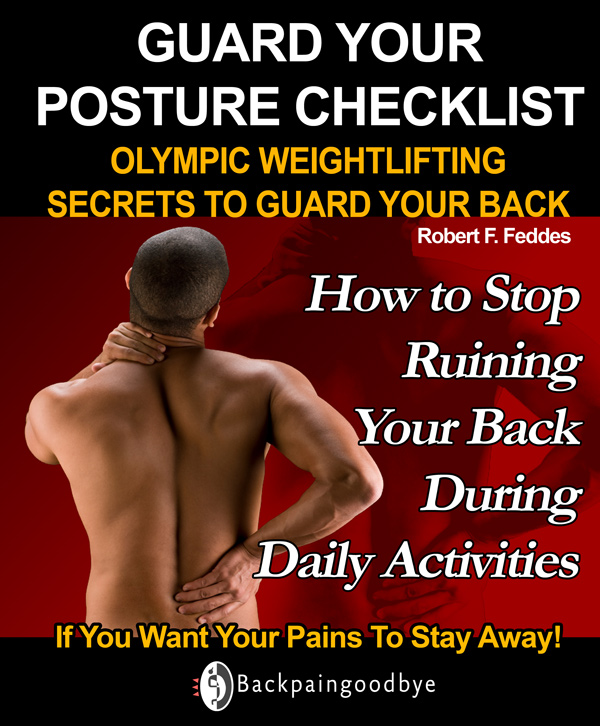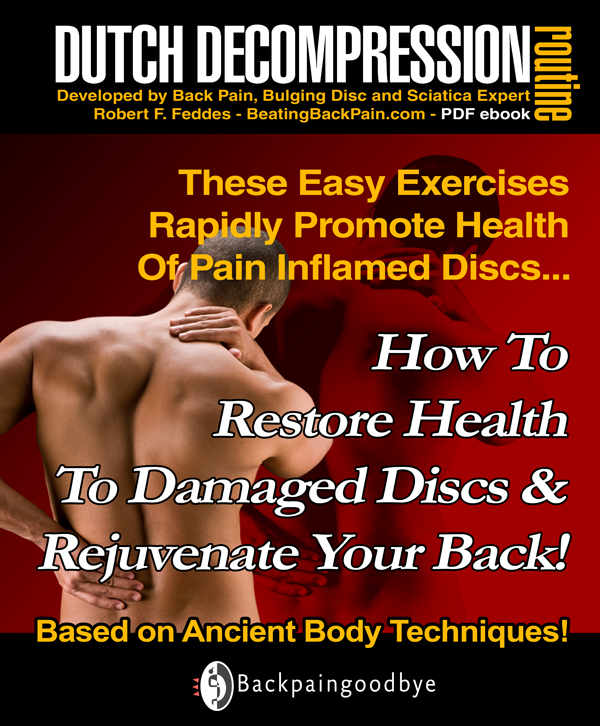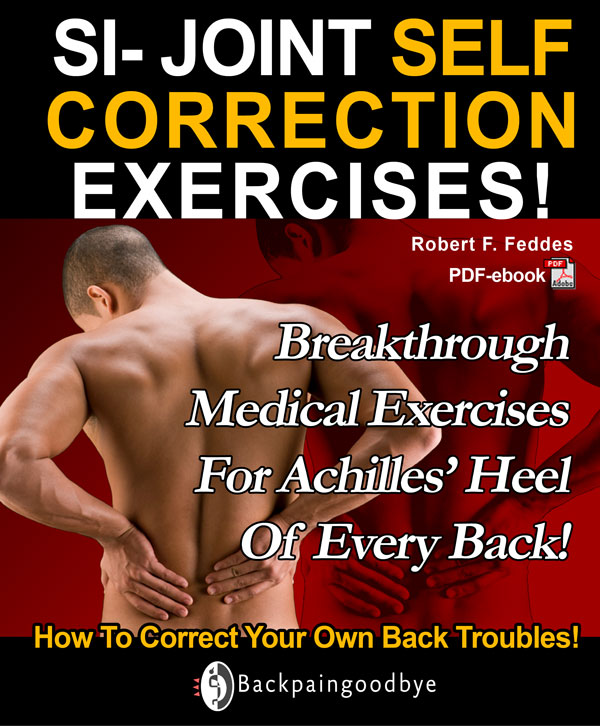In the earlier pages of this article you read that somehow the combination of the collagen and proteoglycans leads to a negative electrical charge that attracts water into the nucleus.
Allow me to go one step deeper and end up with a golden nugget you can apply today to jumpstart the natural healing of your bulging discs!
The collagen proteoglycans combination contains glycosaminoglycans which act as the substance that will hold the water through a mechanism based on osmotic pressure.
I know, I know, this needs some explaining, relax, it is not so difficult to understand.
Wikipedia says: “Osmosis is the movement of solvent molecules through a selectively permeable membrane into a region of higher solute concentration, aiming to equalize the solute concentrations on the two sides. It may also be used to describe a physical process in which any solvent moves, without input of energy, across a semipermeable membrane (permeable to the solvent, but not the solute) separating two solutions of different concentrations. Although osmosis does not require input of energy, it does use kinetic energy and can be made to do work.”
“In order to visualize this effect, imagine a U-shaped clear tube with equal amounts of water on each side, separated by a membrane at its base that is impermeable to sugar molecules (made from dialysis tubing). Sugar has been added to the water on one side. The height of the water on each side will change proportional to the pressure of the solutions.
Osmotic pressure causes the height of the water in the compartment containing the sugar to rise, due to movement of the pure water from its compartment into the compartment containing the sugar water. This process will stop once the pressures of the water and sugar water toward both sides of the membrane are equated.”
What your discs need to stay healthy!
So your disc’s nucleus sucks in water because of it’s negative charge through osmosis. And this process is partly driven by kinetic energy, so you must move! Because your moving around partly enables this process!
And the disc nucleus can hold lots of water and when fully loaded can resist pressure quite well. It is a bit like your car’s tyres holding air, thereby allowing lot’s of load to be carried, without you feeling every bump in the road…
When your spine is loaded, the water will be pushed from the nucleus of your disc to the outside, thus thinning the disc and dividing the pressure equally. This is equal to not feeling the bumps of walking, running, sitting etc. etc.
When the pressure is off again, the nucleus sucks the water back into the center through the earlier mentioned osmotic process.
The annulous fibrosus acts as a strong outside wall and is semipermeable. Which means it allows waste material to go out, and water and nutrients and water to go in.
This basically is the metabolism of your intervertebral disc.
And through this metabolism your discs need to get what they need to stay healthy or get healthy again.
What about the cartilaginous end plates, what are they?
To put it simply, that is just the top and bottom of the disc, connecting the softer gel-like substance of the disc with the vertebrae above and below.
Research has shown that this tissue plays a limited role in the health of your discs and in the metabolism of the discs.
The cartilaginous end plates connect the discs with the vertebrae above and below and as such they also act as a semipermeable membrane allowing waste materials to go out and nutrients and water to go in.
Your intervertebral discs are so called avascular, which means there are no veins supplying blood or nutrients to your discs.
It is only by the process of the negative charge in combination with osmotic pressure that your discs receive what they need. In my book the Dutch Decompression Routine I explain this process in a different way again and also explain some specially developed exercises that you can do at home to speed up the healthy metabolism of the intervertebral discs again.
How Your Discs get What They Need
Let me stress the essence of the metabolism of your discs once more.
Our discs are the largest avascular structure in our bodies. And avascular structures lack the blood supply which is essential for normal reparative processes in the body.
It is through chemical interchange and activity that the discs through the osmotic process of diffusion have a metabolic exchange with the vessels that lie within the vertebral bodies.
The cells of your discs must derive their nutrients and dispose their waste metabolic products by diffusion from and to blood vessels at the disc margins.
Now we understand this, we can simply figure out what is essential to keep things healthy.
Good circulation around the spine, because that increases the flow of nutrients through the vessels that run along the disc margins. And then you also need to make sure that you move enough so the process of osmosis can work fully.
Why You Need Solid Intervertebral Discs
Osmosis only works when the nucleus of the disk has higher density than the surrounding area, because then it will suck in more water and hold that under pressure. And here is wher things often go wrong in the healing process…
You need to know what damages your discs, and how disc density is adversely impacted and how you can counter and correct that!
So let’s see what it is that can damage your discs and make them lose density and consequentially lose resistance to pressure.
I found an article written in 2007 by a number of brilliant surgeons on occasion of the Congress of Neurological Surgeons. In it I discovered the reasons they give why discs degenerate.
Here’s what they say: “The mechanism of disc degeneration is thought to be caused by the inability of the nucleus pulposus (NP to maintain a fluid pressure in the disc and the consequent loss of ability to resist external loads placed on the disc.”
The article also states what was explained above: “The major components of the disc matrix are comprised of proteoglycans and collagen, which are responsible for the trapping of water via osmosis and negative charge.”
And here’s what is said in the article about disc degeneration: “Disc degeneration begins when imbalances between catabolism and synthesis of matrix proteins occurs. These changes are characterized by declining disc nutrition, loss of proteoglycan organization and concentration, a decline in cell numerical density and synthetic activity, and increased degradative enzyme activity relative to matrix synthesis.”
Let me put that in simple language: catabolism means breaking down and synthesis is building up. This is a continuous process in our whole body and in your discs it means that your disc continually renews itself. But there has to be balance in this process and degeneration of discs starts when there is more catabolism than synthesis. Said simply, when there is more braking down than building up.
Interestingly enough – and shocking as well – I found another study that was done on the effect of bupivacaine (commonly used as a local anesthetic for back pain management in interventional procedures). Turns out that this anesthetic is toxic to the matrix protein synthesis in invertebral discs.
Isn’t that interesting? The anesthetic that is commonly used to enable surgeons to cut you open without you feeling it, in itself basically kills just the process that is needed for your discs to build themselves up again.
Good thing that some people are now finally focusing attention on natural ways to regenerate discs. But before I go there, let’s still look at what the neurosurgeons said about disc degeneration, why does it happen? what triggers it?…
Causes of Disc Degeneration
“The natural history of disc degeneration has been associated with a genetic predisposition, a tissue response to an insult or altered mechanical environment, diminished blood supply, smoking, and repetitive high mechanical loading.”
Now that is interesting, this is good news as far as I see it!
So disc degeneration has to do with:
– genetic predisposition;
– tissue response to an insult;
– tissue response to altered mechanical environment;
– diminished blood supply;
– smoking;
– repetitive high mechanical loading.
Let me run that down for you…
Genetic Predisposition and Intervertebral Discs
Your discs can degenerate because of your genetic predisposition, in other words it’s in your genes…
Here’s my opinion on genetic causes of disc degneration: in the vast majority of disc problems, your genes might predispose you so you are prone to these troubles, but only if you abuse your discs will your predisposition lead to trouble.
It’s a bit like a car that was not made very safe to survive collisions. If you just drive a car like that so you never have a collision you will not suffer the problem.
Which means that if you take good care of your body and discs, you will be able to live life without ever running into disc troubles even if you are genetically predisposed to be weaker in that area.
Ok, onward to…
Invertebral Disc Tissue Response To An Insult:
Your discs may degenerate as the result of an insult – an injury in other words. Par example if you are hit very hard in an accident, it could lead to damage in your discs. This is only logical and IMO if you receive proper care your discs might heal again, but if you receive surgery in connection with your accident it could be that the anesthetic alone does more damage as explained above. I will pretty much leave this cause out of my further consideration because I believe most disc troubles are caused by the last 4 mentioned causes. And those you can change all by yourself!
Invertebral Disc Tissue Response To Altered Mechanical Environment
To understand what is meant here I had to study an article written by some bright minds from the Woodruff School of Mechanical Engineering, at the Georgia Institue of Technology.
In the article the writers point to Wolff’s law, which says that tissue form or structure follows from its function.
“At the time Wolff’s law was simply based on the apparent correspondence between anatomical observations of trabecular bone organization and estimations of principal stress directions due to functional loading conditions.
Other investigators later discovered that adaptation of tissue strucure and composition is cell mediated. In other words there is some basic intelligence in our cells that reacts to the mechanical environment and as a result tissue develops in a certain direction.”
And also: “These early observations spawned the interdisciplinary field of mechanobiology, focused on identifying mechanisms by which mechanical signals are tranduced into cellular activity, and emphasized the need to consider the effects of physical factors on tissue growth and remodeling as an important part of strategies for tissue regeneration.”
To show how this works just look at lifting weights: if you train your muscles and lift weights, your muscles grow. Simply because form follows function, so if you force your muscles to lift more weights, your muscles’ cells will respond with the formation of more tissue to allow you to lift more weights! And if you know what to do, you can use this principle to regenerate your discs!
In my book The Dutch Decompression Routine I write about research that shows that african women who regularly carry heavy loads, have stronger bones. I also mention Nasa research into the effects of zero gravitation on bone density. Turns out astronauts come back from space with lower bone density which is easily explained by Wolff’s law that tissue form follows function.
Someone once said it even simpler yet: USE IT OR LOOSE IT.
You have to understand the original function of your intervertebral discs and gently force them to function in a certain way, so your discs re-develop the density that is needed for the metabolism of your discs to restore your discs to full health.
I do not know if you are as enthusiastic as I am, but this tells me exactly how to help degenerated discs to regenerate.
If you are interested in an exercise regimen that is based on these exact insights of all these incredibly bright minds, then have a look at my three books together.
But allow me to go to the next mentioned cause for disc trouble…
Diminished Blood Supply And Disc Health
Now that might look like the easy one, but there is more to it than we can figure out af first sight.
The simple part is that if you don’t move enough and sit all day, there will not be enough circulation around the spine and therefore not enough blood supply to the margins of the discs.
The deeper connected problem has to do with out diet.
Studies have shown that the permeability of cell membranes is impacted by the fats that we eat. If we eat the wrong type of fats our cell membranes will become less and less permeable and as a result your individual cell metabolism has less energy at it’s disposal for the healing process which in itself is quite an energy consuming process.
I had to go to research of 7 time Nobel Prize nominee, German Dr J. Budwig to get a better understanding of cell metabolism. Then I had to also study the research as written down in the book: “Fats that heal and fats that kill”.
Lastly it was Prof Dr. Otto Warburg who helped with the last needed insights into cell metabolism.
If you want your discs to regenerate naturally it is definitely beneficial to make some specific changes in your diet so you can allow healing to happen better & faster. I explain more about that in a book I have written on a whole different subject. For now I will leave this out of this article, because I will focus on the quick win options at your disposal.
Smoking And Intervertebral Disc Health
I don’t have to say much about this, but the effect of smoking and nicotine intake on healing of different types of tissue are well documented. If you still smoke, you might want to reconsider that, at least for the time it will take to fully help your body to heal and regenerate your discs.
Repetitive High Mechanical Loading And Your Discs
This is pretty straightforward. High mechanical loading is the result of either lifting too heavy or lifting the wrong way.
But ofcourse it is not only when we lift, because any activity that we undertake, leads to load on the spine, therefore anya ctivity that we do with wrong posture could lead to disc damage.
If you take on too much, or sit too long in the wrong posture, or work with a bad posture, know that this has consequences for the healing capacity of your intervertebral discs.
In my book Guard Your Posture I have developed a special posture correction regimen that enables people to quickly regain proper posture techniques.
3 Things You Must Know To Heal Your Bulging or Herniated Discs
Let me get to a conclusion here, I promised 3 things, but I will add one more here, this is what you need to know to help your body heal your discs:
Your discs are made of special tissue that needs enough circulation and movement to receive nutrients, water and oxygen, and to get rid of waste materials.
Your discs react to what you do, how you do it, what you eat drink and smoke as well.
You can help your discs regenerate and gain health by making some life style adjustments regarding your diet, your daily amount of moving and your posture.
Sometimes your discs need special attention to regenerate, this could be done in the form of integration of special natural decompression techniques into your life, a controlled series of moves that forces tissue formation to follow function and special dietary changes and supplements that are known to postively impact all necessary ingredients of natural disc healing and regeneration.
If you want access to a proven program that incorporates most of the above, then have a look at the Back Pain GoodBYE! program.


